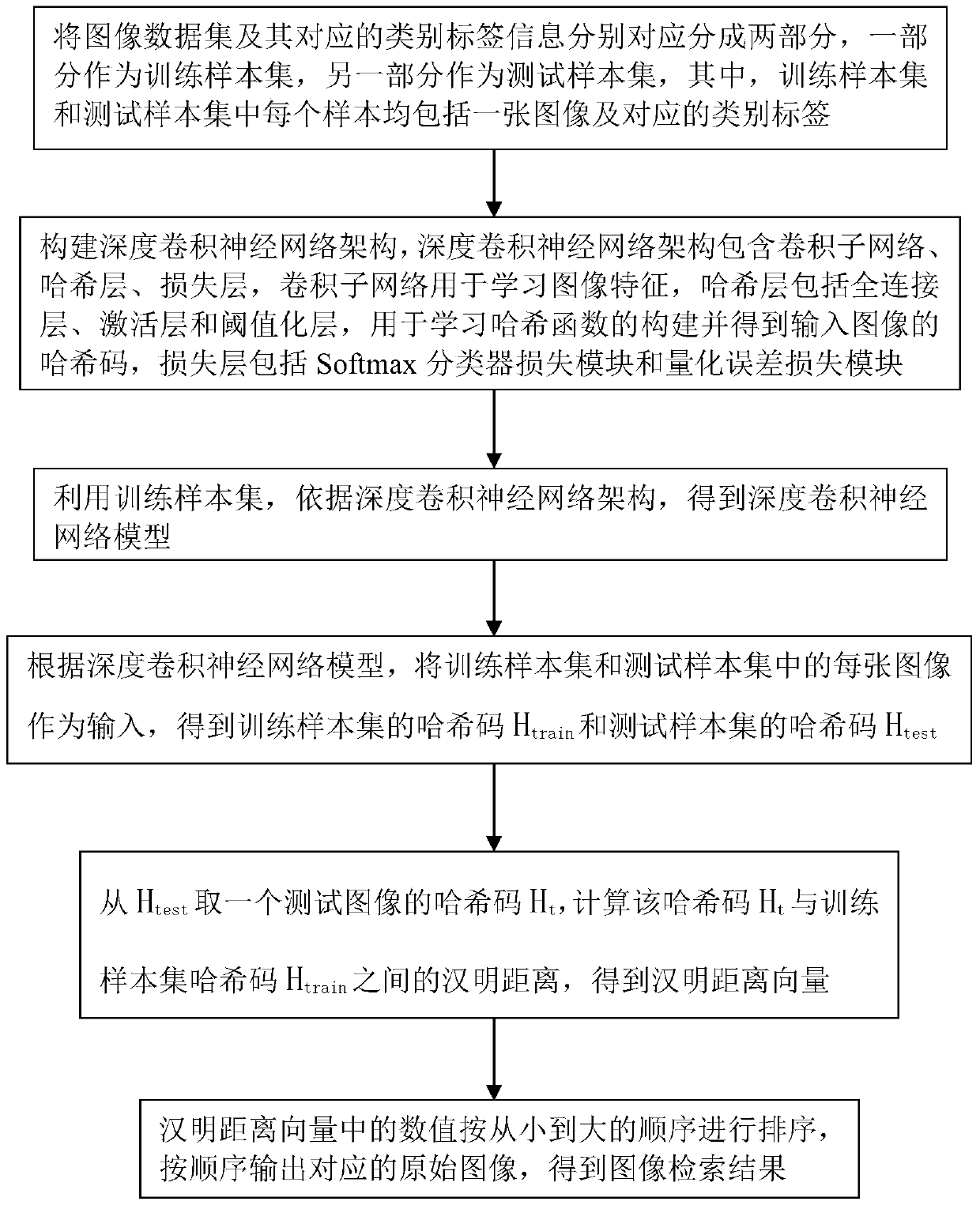Image retrieval method based on deep learning and Hash
An image retrieval and deep learning technology, which is applied in the field of image retrieval based on deep learning and hashing, can solve the problems of quantization error loss and low retrieval accuracy, and achieve the effects of reducing quantization error, improving accuracy, and enhancing expression ability
- Summary
- Abstract
- Description
- Claims
- Application Information
AI Technical Summary
Problems solved by technology
Method used
Image
Examples
Embodiment 1
[0023] Embodiment one, see figure 1 As shown, an image retrieval method based on deep learning and hashing, specifically includes the following steps:
[0024] Step 1. Divide the image data set and its corresponding category label information into two parts, one part is used as a training sample set, and the other part is used as a test sample set, wherein each sample in the training sample set and the test sample set includes an image and the corresponding category labels;
[0025] Step 2. Build a deep convolutional neural network architecture. The deep convolutional neural network architecture includes a convolutional subnetwork, a hash layer, and a loss layer. The convolutional subnetwork is used to learn image features, and the hashing layer includes a fully connected layer and an activation layer. And the thresholding layer, used to learn the construction of the hash function and get the hash code of the input image, the loss layer includes a Softmax classifier loss modu...
Embodiment 2
[0030] Embodiment two, see figure 1 As shown, an image retrieval method based on deep learning and hashing, specifically includes the following steps:
[0031]Step 1. Divide the image data set and its corresponding category label information into two parts, one part is used as a training sample set, and the other part is used as a test sample set, wherein each sample in the training sample set and the test sample set includes an image and the corresponding category labels;
[0032] Step 2. Build a deep convolutional neural network architecture. The deep convolutional neural network architecture includes a convolutional subnetwork, a hash layer, and a loss layer. The convolutional subnetwork includes multiple convolutional layers, pooling layers, and fully connected layers. Use For learning image features, the hash layer includes a fully connected layer, an activation layer, and a thresholding layer, which are used to learn the construction of a hash function and obtain the ha...
PUM
 Login to View More
Login to View More Abstract
Description
Claims
Application Information
 Login to View More
Login to View More - R&D
- Intellectual Property
- Life Sciences
- Materials
- Tech Scout
- Unparalleled Data Quality
- Higher Quality Content
- 60% Fewer Hallucinations
Browse by: Latest US Patents, China's latest patents, Technical Efficacy Thesaurus, Application Domain, Technology Topic, Popular Technical Reports.
© 2025 PatSnap. All rights reserved.Legal|Privacy policy|Modern Slavery Act Transparency Statement|Sitemap|About US| Contact US: help@patsnap.com



